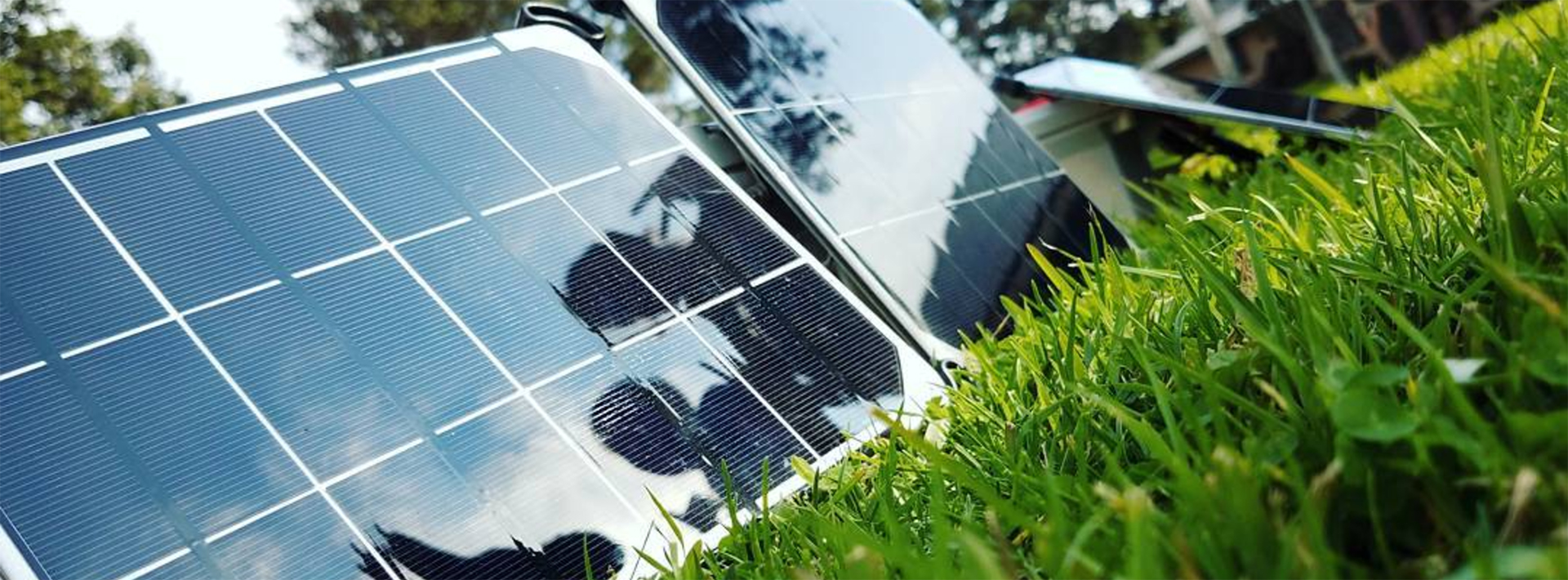TREX 2017: The fieldwork learning curve

[fusion_text]Learning from the successes and failures of fieldwork | Tuesday January 17, 2017 | Lily Dove
When most people think of science, they think of sterile labs, faceless people in white lab coats and gloves, and overall, a potentially not-so-fun working environment. On TREX, we are proving all of those misconceptions wrong. We have learned that science doesn’t have to be pretty if it’s functional; luckily, Hawaii provides the gorgeous backgrounds and scenery so it ends up being pretty anyway!

Caption: Mikayla, me, and Tchelet (left to right) attach a solar panel to one of our sensors. Photo credit Alexa Jaeger.
Hands-on science is truly a one-of-a-kind experience. There is nothing quite like building a sensor from scratch, attaching to a side of a building, checking in on it every hour, and then realizing the next day that it’s…broken. Or that it has stopped collecting data. Or that it would make a better paperweight than a sensor. There is a lot of failure when it comes to fieldwork, but it wouldn’t be fun if that weren’t the case. Failures help scientists learn and get better, and although failures can be disheartening at times, having a great team who can help you laugh and learn through all the mistakes along the way makes a big difference.
If there’s one item in TREX that has witnessed the rough, tough, and messy nature of scientific research, it’s the table outside of the house we’ve been staying in. So much science (failures and all!) happened on that table in the last three days, I think it deserves the Nobel Prize for Flat Surfaces. I expect in the next few days, the table will see a fair amount more of soil spills, sensor testing, and hopefully, surprises and successes! I look forward to spending a lot more time working on the table with great company and new discoveries.[/fusion_text][one_half last=”no” spacing=”yes” center_content=”no” hide_on_mobile=”no” background_color=”” background_image=”” background_repeat=”no-repeat” background_position=”left top” hover_type=”none” link=”” border_position=”all” border_size=”0px” border_color=”” border_style=”” padding=”” margin_top=”” margin_bottom=”” animation_type=”” animation_direction=”” animation_speed=”0.1″ animation_offset=”” class=”” id=””][imageframe lightbox=”no” gallery_id=”” lightbox_image=”” style_type=”none” hover_type=”none” bordercolor=”” bordersize=”0px” borderradius=”0″ stylecolor=”” align=”center” link=”” linktarget=”_self” animation_type=”0″ animation_direction=”down” animation_speed=”0.1″ animation_offset=”” hide_on_mobile=”no” class=”” id=””]  [/imageframe][/one_half][one_half last=”yes” spacing=”yes” center_content=”no” hide_on_mobile=”no” background_color=”” background_image=”” background_repeat=”no-repeat” background_position=”left top” hover_type=”none” link=”” border_position=”all” border_size=”0px” border_color=”” border_style=”” padding=”” margin_top=”” margin_bottom=”” animation_type=”” animation_direction=”” animation_speed=”0.1″ animation_offset=”” class=”” id=””][imageframe lightbox=”no” gallery_id=”” lightbox_image=”” style_type=”none” hover_type=”none” bordercolor=”” bordersize=”0px” borderradius=”0″ stylecolor=”” align=”center” link=”” linktarget=”_self” animation_type=”0″ animation_direction=”down” animation_speed=”0.1″ animation_offset=”” hide_on_mobile=”no” class=”” id=””]
[/imageframe][/one_half][one_half last=”yes” spacing=”yes” center_content=”no” hide_on_mobile=”no” background_color=”” background_image=”” background_repeat=”no-repeat” background_position=”left top” hover_type=”none” link=”” border_position=”all” border_size=”0px” border_color=”” border_style=”” padding=”” margin_top=”” margin_bottom=”” animation_type=”” animation_direction=”” animation_speed=”0.1″ animation_offset=”” class=”” id=””][imageframe lightbox=”no” gallery_id=”” lightbox_image=”” style_type=”none” hover_type=”none” bordercolor=”” bordersize=”0px” borderradius=”0″ stylecolor=”” align=”center” link=”” linktarget=”_self” animation_type=”0″ animation_direction=”down” animation_speed=”0.1″ animation_offset=”” hide_on_mobile=”no” class=”” id=””]  [/imageframe][/one_half][fusion_text]
[/imageframe][/one_half][fusion_text]
This table has been through a lot. Professor Ben Kocar teaches us how to test the pH of soil samples, on right. Tchelet , Mikayla, and I pose with the solar cells which power our sulfur dioxide sensors, left. Photo credit Alexa Jaeger.
Every year, a group of MIT students and professors travel to the Big Island of Hawaii to gain fieldwork experience through TREX (Traveling Research Environmental EXperiences). The first TREX trip was held in 2000, and since launching has taken students on research activities in domestic and international settings.For more undergraduate opportunities, click here.
[/fusion_text]



